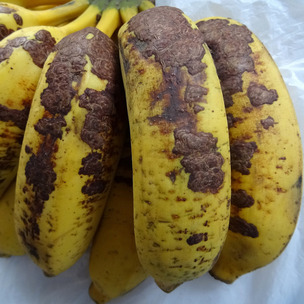
What are the causes of shrink, and what can we do about them?
Most shrink can be summarized into basic categories:
- Spoilage
- Mechanical Damage
- Consumer Returns
Today we'll review our first shrink component: Spoilage. Simply put, spoilage is a function of time and temperature. Every fresh produce item has a finite amount of time before it begins to break down and is no longer a desirable purchase for the customer. Temperature influences time. In general, colder temperature increases shelf time, higher temperatures reduce shelf time.
Improper handling & merchandising factors can increase the rate of spoilage:
- Moisture/misting- Many products gain improved shelf life with continuous moisture available to them. Lack of moisture causes rapid declines in freshness rapidly.
- Airflow- Many products react negatively to constant air streams. Produce skins dehydrate and shrivel, even when the air is refrigerated.
- Sun/Heat- Outdoor displays, displays in windows, and displays exposed to other heat sources (such as refrigerated case discharge vents), all cause product heat and decay faster.
- Exposure to Compromised Product- If a given item has begun to mold, failure to remove it quickly from a display will cause accelerated spread of molds or fungus, causing more lost product.
Therefore, three ways to reduce spoilage can be summarized as follows:
- Reduce the time the product spends in your store
- Reduce the temperature of the product
- Ensure proper moisture levels.
Key ideas to limit spoilage. Ensure your management and produce clerks are in tune with these factors. In a 24 hour a day business each retailing, storage, and merchandising decision can affect the level of freshness your customers expect.
Methods to reduce spoilage can take place at various steps in the distribution and merchandising process.
- Utilize misting systems correctly. Manually apply water in necessary conditions.
- Keep temperatures cool whenever possible. Use refrigeration for the most sensitive product. If product is displayed at room temperature, keep it away from artificial heat sources.
- Keep airflow off of product. Product directly under refrigerated discharge vents should be durable or packaged if possible. Avoid placing delicate product under store heating units, or front entrance air curtains.
- Display appropriate amounts of product on room temperature displays.
- Rotation - Be sure product on displays is correctly rotated. Practice "First- In, First-Out (FIFO) philosophy. This will ensure the product spends the minimum time on your display.
- Supply Chain- Be sure you have enough deliveries per week that product does not sit for very long. Ensure supply sources are not holding product for extended periods before shipments. Many packers such as Driscoll's have pick dates stamped on the boxes so you can gauge the age of the product you are receiving.


 RSS Feed
RSS Feed
